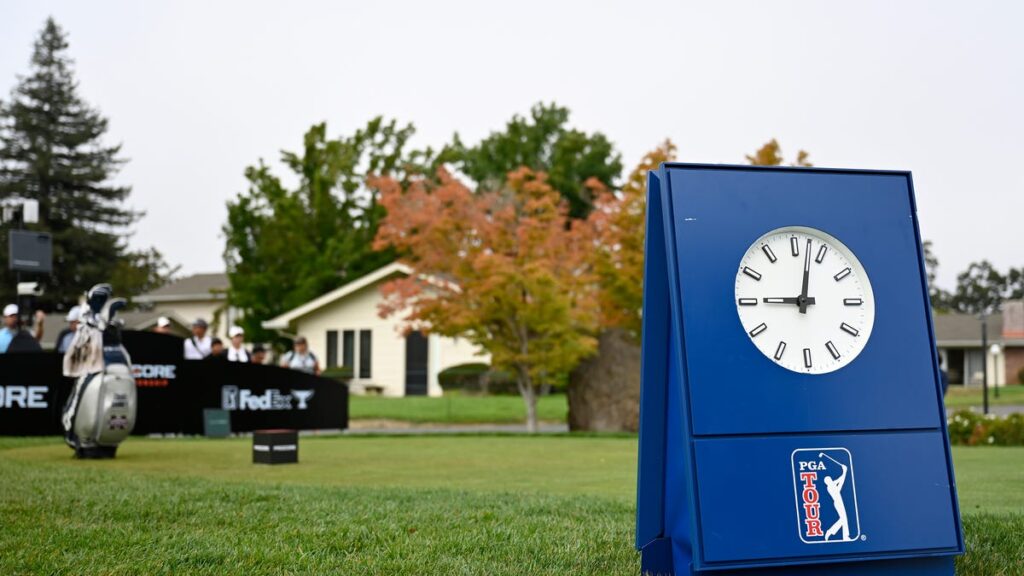The Procore Championship, which begins the seven-stop FedEx Cup Fall this week, is the exception that proves the rule—the exception being that the presence of 10 members of the U.S. Ryder Cup team adds reputational heft to the field, while the rule is that this stretch on the PGA Tour schedule usually boast all the star power of a county fair hootenanny.
Last year, the California kick-off drew not a single player who might accurately be described as a boon for viewership and things weren’t much better at the other seven stops (Las Vegas is no longer part of the line-up). A few top guys competed at the Zozo Championship in Japan and Ludvig Aberg defended at the RSM Classic. Otherwise, Scottie Scheffler was on his couch and the European stars had decamped to play over yonder.
None of which much recommends the PGA Tour product after Labor Day and before the Super Bowl, and highlights the need for both a domestic rebrand and a global rethink.
The Fall tournaments—whether positioned at the start of a wrap-around season or as an addendum to a calendar-year schedule—are relics of a time when the Tour focused on creating playing opportunities for its members, regardless of actual fan interest in seeing those particular members. Tomorrow’s Tour is obviously intent on building the business around popular superstars, which renders this portion of the schedule unfit for purpose. But should it be retired or recast?
There is something at stake in the next seven events, though not for those who secured status for ’26 by finishing top 50 in the FedEx Cup. They’ve no incentive to play, save for sponsor obligations, boredom or marital discord at home. Those who end up in the AON Next 10 (positions 51-60) earn a berth in two early season Signature tournaments, a category Aberg and Maverick McNealy have used to great effect. And with only 100 fully exempt cards available, versus 125 previously, there’s no shortage of guys who will be competing under intense pressure for the next two months.
But that’s part of the problem with how the FedEx Cup Fall is marketed. Hey, come watch guys who had mediocre seasons jockey for a chance at a less mediocre season next year!
We’ve seen terrific stories emerge from Fall events, none better than Erik van Rooyen winning in Mexico under the weight of a close friend’s imminent death, plus breakout victories by McNealy and Aberg, and the comeback of Camilo Villegas. But crossing fingers for feel-good leaderboards isn’t enough for tournaments that need to better justify their existence. It demands a compelling narrative framework to juice fan interest.
It should be simplified as a stand-alone stretch. Let the 70 who qualify for the FedEx Cup Playoffs have their status and manufacture a hunger games-style battle for the last 30 cards. Dispense with presenting things in relation to a season-long points race that concluded months earlier, because when the Tour encourages fans to root for someone to finish 51st or 100th, it’s admitting they’re selling chaff. But fans might engage with a tussle for 30th place if 31st means unemployment. That subtle shift can change the perception of scavengers fighting for crumbs to one of hopefuls scrambling for seats at the banquet.
This window can be additive to the PGA Tour, but right now it’s awfully close to being dilutive. That’s a bad place to be when the new CEO, Brian Rolapp, and his investors at Strategic Sports Group are bent on streamlining the product according to business merits, not legacy attachments or satisfaction surveys in the locker room.
There’s a core golf audience that needs to eat during the winter, and if the Tour can’t present a robust menu at home because of NFL dominance, then it ought to help lay a table overseas. The fourth quarter of the calendar, and arguably a portion of the first quarter, are ripe for experimentation at no cost to the FedEx Cup schedule. Partnering with the DP World Tour to maximize the value of those months would not only test the viability of a global footprint for the U.S.-centric circuit, it would protect a vulnerable flank against a future competitor that proves more competent than LIV.
That’s not a huge lift for the PGA Tour, even if an asset like Scheffler prefers to stay home. It takes only a couple of stars committing to significantly elevate a tournament’s profile and commercial potential (see: McIlroy, Rory; Australian Open). Rolapp is expected to dial in to the DP World Tour’s board meeting on Monday at Wentworth, where the field assembling for the flagship BMW Championship is at least the equal of that we’ll see in Napa. Rolapp could do worse than signal interest in a genuine collaboration to test what growth opportunities really exist ex-U.S.
As currently constituted, the Fall schedule isn’t serving anyone. Not the PGA Tour, which doesn’t have the luxury of maintaining a tepid status quo when it has to wring value from every window. Not loyal sponsors, who struggle for relevance because its presumed pointless to market golf in football season. And not fans, who subsist on gruel because executives are too wedded to outdated models to offer them an alternative to watching the Browns and the Titans race each other to the bottom.
Perhaps a long-term solution for this portion of the schedule will emerge from the Tiger Woods-chaired Future Competition Committee that is reviewing the Tour’s business. Let’s hope so, because this ain’t it.
Read the full article here



